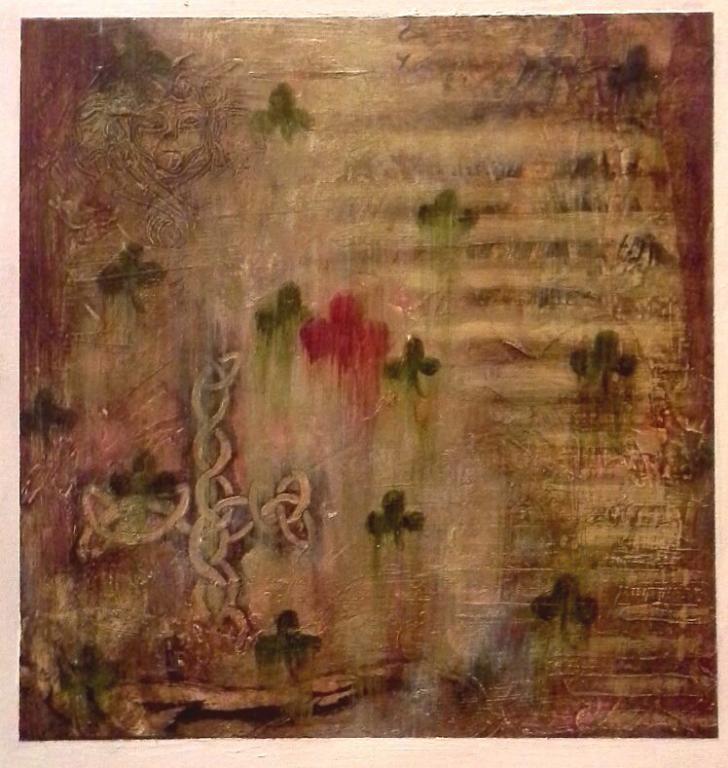An Irish-Inspired Painting that Will Lift Your Spirits
Yesterday, Chicago artist and gallerist Dan Addington (who also happens to be my brother-in-law), posted an image on Facebook of one of his early paintings inspired by his many visits to Ireland. He also posted the following reflection about it, which I wanted to share with you ( Christian painting):
My first trip to Ireland way back in ’96 was very influential and powerful. Just before I went I had discovered Irish blood in some newly discovered adoption papers. Once there, I was moved by the land, the culture, and the great people I met during my stay. When I got back to Chicago, I launched into a series of paintings attempting to reinvest symbols of that island with the sense of mystery I had felt while there. I showed those paintings the following year at the Contemporary Art Workshop in Lincoln Park (RIP), one of my first solo shows in Chicago. This painting was the pioneer piece in the series. It was exhibited the next year in the exhibition “Botanica” which originated at the Tweed Museum of Art and traveled to, among other venues, the Chicago Cultural Center. Fortunately, all the work from that series found homes, but I kept this one. “Beyond the Pale”, oil on museum board, 12×12 (image)
As is well known, the “shamrock,” (seamróg, which means “little clover”), was apparently used by the missionary St. Patrick to teach the Irish about the Trinity (although, a direct evidential link connecting Patrick and the shamrock doesn’t occur until 1675 in religious art, according to authoritative source Wikipedia). Missionaries and theologians have long used symbols and analogies to try to portray the complex notion of the Trinity in understandable and transmittable ways. Theologians will admit that such symbolic representations never fully succeed in penetrating the heart of the idea–at least not without falling into the side of one heresy or another (which might also just be representative of the fact that we are all pretty much heretics, anyway). In terms of artistic representation, though, the more elemental symbols–such as the shamrock–were better (theologically speaking) than the more “realist” representations that would come later.
Anyway, I’ve always appreciated the textured depth of Dan’s artwork. He uses beeswax, tar, and other organic materials which give an earthy and botanical depth to his work which, combined with the religious and spiritual imagery makes his paintings more theological than he might admit. This painting is a great example of that combination.
When I view the shamrocks here with their trinitarian symbolism, it’s as if God, as Father, Son, Spirit, is everywhere melting or dripping into the earth. The shamrocks might also double as crosses–the dark red one in the middle seems to link botany with biology–and God’s trinitarian life to the lifeblood of humanity.

Comments
Post a Comment